In the Presence of His Enemies: The Controversy of James Dalton, May 1920
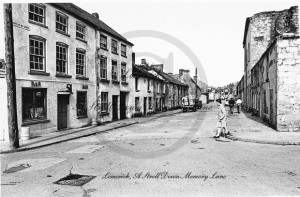
Daniel Murray on the murky, unsolved killing of IRA intelligence officer James Dalton in May 1920 during the Irish War of Independence.
The Murder
On the 15th of May 1920, James Dalton was making his way back to his house at 5 Clare Street, Limerick, at the end of another unremarkable day. He had left home earlier at around noon for his work as a clerk in the Electric Power Station on Frederick Street, and afterwards had joined his father-in-law in a pub sometime after 6 pm. Half an hour later, the two men had left the premise and went their separate ways. If Dalton was in any way troubled or concerned for his safety, he gave no sign of it.
Within a couple of hundred yards from his residence and within sight of his thirteen-year old daughter, Kitty, James Dalton was accosted. The initial report numbered the assailants as from four to six, though Kitty saw three, one in front of her father and the other two on either side. Testifying afterwards, Kitty could not identify any of them, only that they were young and one was tall.
James Dalton was shot six times with revolvers at point blank range.
Their quarry surrounded, the men opened fire point-blank with revolvers and continued doing so even after Dalton had collapsed face-first onto the street, one man lingering while the others made their escape long enough to put two more rounds into the back of his prone target. Caught in the line of fire was six-year old Elly Lowe, struck by a stray shot that left a jagged hole in her calf.
Both victims were rushed to hospital. While Elly Lowe’s wound was ruled not to be a serious one, Dalton was pronounced “life extinct”. Six bullets were found in him: three in his front, one embedded over his heart, one lower in the same region, with the other passing far enough to lacerate his liver, two more in his back, and the last in his hand, close to the thumb. Four of the injuries by themselves would have been enough to be fatal. The close proximity of his assassins and their cold thoroughness had ensured that Dalton’s chances of survival had been almost non-existent.
The 48-year-old deceased had left behind a widow and eleven children.[1]
The Mystery
Members of the Royal Irish Constabulary (RIC) arrived at the scene of the crime. That some of them felt the need to be armed while on duty was an indicator in itself that Limerick was not a city at peace with itself. Though the police stayed for some time, no arrests were made. No arrests would ever be made.
As the murder had been committed in an isolated district of the city, it took until sometime after 7 pm, over half an hour later, for the news to be widespread. There was shock at the slaying of a man who had played leading roles in a number of sporting, political and military spheres, a fact laid bare by his brother as Joseph Dalton took the stand at the resulting Crown court of inquiry in Limerick.
Dalton had been a prominent sportsman, Sinn Féin activist and IRA Intelligence officer.
A skilled and versatile athlete, James Dalton had boxed as a middle-weight champion, and had been a trainer for the All-Ireland Limerick hurling team. He had been heavily involved in the rise of the now ascendant Sinn Féin party, having campaigned for its East Clare and North Roscommon Parliamentary election victories, as well in the unsuccessful by-election for South Armagh where he had impressed an acquaintance as “physically a fine figure of a man.”[2]
As a patriot he could not be faulted, having assembled with the rest of local Irish Volunteers on Easter Week four years ago for what would be for them an aborted Rising. It was true, Joseph added, that his brother had not had the same interest in the Volunteers once the movement really took off after the Rising although he had remained with them. In any case, he had already proven his willingness to lay down his life for his country.
As Joseph recounted in the Crown courthouse his brother’s multiple careers, it would have seemed baffling that anybody would want to kill such a prominent and well-connected individual. But as Joseph continued on, it became clear that things had been amiss for some time.[3]
The Suspicion
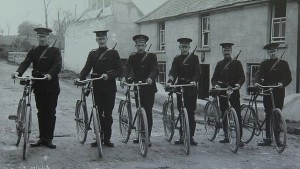
Not included by Joseph in his testimony was how Dalton had also been shot at two months before and wounded with the loss of a finger, probably from throwing up his hand in a defensive gesture. Graffiti on the streets had announced that the matter was far from over: “A bullet is waiting for Dalton the spy.” Undaunted, he had continued on with his life as normal. Perhaps he had attempted to take matters into his own hands and believed the matter resolved.[4]
What this matter may have been was strongly hinted at by Joseph as he continued on with his testimony: in December 1919, Dalton had been seen entering the house of a RIC officer and leaving it sometime later. This had given rise to what Joseph called a “scandalous report” and though he did not spell it out, it was obvious that the scandal lay in the implication that Dalton was acting as a spy for the police.
Dalton was suspected by some in the IRA of being an informer and had been shot before even though a Dail inquiry had cleared him of the charges.
No charges were made against Dalton, either from Sinn Féin or his fellow Volunteers. It was all rumour, but rumours were enough to kill or be killed over as Ireland became increasingly mired in insurgency and counter-insurgency.
Eager to silence these suspicions before they claimed any more from him, Dalton had met with a representative of the recently formed Dáil Éireann on St Stephen’s Day of 1919, demanding a full examination to clear himself in the eyes of his peers. This request had been duly forwarded on. Some time later, Dalton had gotten the inquest he had sought, the documented results of which were presented by Joseph to the Crown courtroom:
Dáil Éireann Official Verdict in case of Mr James Dalton. The main point was not in dispute that the plaintiff (Mr Dalton) had entered certain premises at 1am and remained there til morning, the fact which had brought suspicion upon him.
Having heard the evidence I was of opinion that the plaintiff had been guilty of a grave indiscretion and error of judgement in acting as he had done, and that his conduct very naturally gave rise to much suspicion.
As against this I was certain of opinion that there had been no guilty or dishonest notice on his part, and that the suspicions in this respect had been unfounded. [5]
Plainly, however, not everyone had agreed with that verdict.
This was the first time this exoneration had been made public, although, according to Joseph, these Dáil findings had been common knowledge on the streets of Limerick a week before the shooting, further underlining for his audience the senselessness of the murder, and that an innocent man had died for nothing.
A Question of Courts
It was a peculiar scene: Joseph Dalton using the Crown court to vindicate his brother by airing the ruling of another court that was regarded as an illegal entity by the one he was standing in. Of those in attendance, only the Crown representative, District Inspector (DI) Marrinan, seemed to recognise the contradiction and rose to question the witness on the stand.
When Marrinan asked Joseph if he had been present at the Dáil inquiry in question, J.J. Dundon, the solicitor for the Dalton family, objected, accusing the DI of trying to trick the witness into incriminating himself. Upon Marrinan promising as a man of honour not to take such an advantage, Joseph confirmed that he had indeed been present at the Dáil inquiry.
Marrinan continued his line of questioning, only to be met by a wall of repetition:
DI Marrinan: Was the verdict given in open court?
Joseph Dalton: It was forwarded to the proper authorities.
DI Marrinan: What I want to know – was it promulgated in open court at the time your brother was tried?
Joseph Dalton: It was forwarded to the proper authorities.
After getting Joseph to confirm that James Dalton had been present at his own trial, DI Marrinan pounced with an unpleasantly pointed question: what would have been the consequences if James Dalton had been found instead guilty by the Dáil inquiry? It did not take a legal mastermind to understand what the District Inspector was insinuating: that James Dalton had instead been found guilty by this Dáil and been executed accordingly.
Dundon objected again on the grounds that no witness could tell what anyone would do in hypothetical situations. Marrinan pressed on, wanting to know what powers this underground court had. At this, Joseph rallied enough to make a sortie from the stand: “It is the government of this country and it is recognised by the country.” However, when Marrinan repeatedly asked whether the power of this government included that to sentence a man to death, Joseph retreated back to pleas of ignorance on the matter.
Choice Words
Unable to lure his witness into saying anything beyond stock answers, Marrinan instead tried unsettling him with thinly veiled taunts:
DI Marrinan: Were you aware that a good many evil disposed people had given your brother a lot of trouble – didn’t they shoot him?
Joseph Dalton: That was public property; I was aware he was shot.
DI Marrinan: Were you not aware also that in different parts of the town there were written notices “Dalton the Spy” and “Dalton the Informer”?
It was the first time in the course of the inquiry that the loaded terms ‘spy’ and ‘informer’ had been voiced. Joseph did not rise to the challenge and downplayed the aforementioned notices, dismissing them as the work of youngsters whose mothers had already apologised for them. Furthermore, he added, the Sinn Féin Club had helped to wipe out the notices, a message to his onlookers that James had had the support of the new local authorities as well as the new national one.
Lines in the Sand
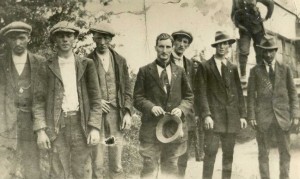
Hoping to cast a wider net, DI Marrinan began to ask about the men James had contacted when seeking his Dáil Éireann inquiry. When it seemed that Joseph might actually answer, Dundon cut them both short on his potentially sensitive matter.
The solicitor then ignored the District Inspector to address to jury, reminding them of the brutality of a man shot down in front of his children, and how he did not think he had anything to add by speaking of it any further.
What Dundon did speak further on was how the lack of charges made against James Dalton by the political organisation – and by this, everyone knew he meant Sinn Féin – and the steps he had taken to clear his name of the still-unspecified accusation against him all pointed towards an innocent man. Dundon closed his speech with the maxim of how ‘nothing uncharitable be said of the dead.’ In short: case closed.
The Crown Court of Inquiry into Dalton’s death struggled to realise that republicans now considered their institutions to be the city’s ‘proper authorities’.
A naïve newcomer to the country might have found it peculiar that a solicitor in a murder inquiry would spend his time on the reputation of the victim and none on who might have actually done the deed. But then, Dundon probably knew that the Crown court in which he stood had little power on the matter, anyway.
The District Inspector was not so easily deterred, however, when it came to his turn. How had it come to pass, he wondered out loud, that in a Christian and civilised city, a man had been done to death in broad daylight by a shadowy court that presumed the power of life and death? Did not the jury consider this one murder to be a dangerous precedence, that to accept the situation as somehow normal would be to grant such assassination a form of legality? Marrinan implored his audience as Irishmen and Catholics:
For God’s sake have pluck and have public opinion, and stand up against these cold-blood murders that are disgusting and ruining our country. Let them accept no record of any secret court but only the record of a court that tries a man with the light of God on it.
I beg of you to take your courage in your hands, and I say damn these people who would shoot myself to-morrow if they could do it. Take your courage and do as I would do, and you will soon have Ireland a land that every man can be proud of.
But Marrinan was preaching to the wrong congregation. The District Inspector was yesterday’s man, as out of touch as the system he was striving to defend. When the jury returned its verdict, it gave nothing more than a repeat of the obvious – that James Dalton had died of shock and haemorrhaging from multiple wounds by persons unknown – and the standard expression of sympathy for the bereaved family. For better or for worse, the jury had accepted the new status quo in their city.
The sole whiff of comedy in the grim and often tense proceedings was provided when DI Marrinan refused to hand back the Dáil letter of James Dalton’s innocence. When the court coroner protested such ungentlemanly conduct, the District Inspector replied that it would take a better man than the coroner to take it off him. Rather than risk the spectacle of two officials brawling in court over a sheet of a paper, the coroner merely accepted a second copy from the deceased’s brother.[6]
A Question of Spies
The IRA practice of targeting spies during the War of Independence has been a contentious issue for historians, not least for how emotionally charged it can be. When reviewing such practices by the Meath Brigade, historian Oliver Coogan admitted to his readers that it “may make unpleasant reading or even upset some people’s romantic notions that nothing underhand or unsavoury was indulged in by Volunteers in the old days.”[7]
Relatively few of those shot as informers were IRA men.
Further complicating such romantic notions are the questions to whether the victims were killed solely on the basis of their suspected espionage or if factors such as sectarianism, personal feuds, unfounded paranoia and the like were involved.
The case of James Dalton is atypical for a number of reasons. For one, very few IRA members were charged by their own with spying throughout the course of the War. This made the IRA, according to historian Eunan O’Halpin, one of the safest places for an informant to have been was within the IRA, given how only a handful of Volunteers – perhaps only half a dozen out of nearly 200 – were executed up to December 1921.[8]
As if this did not make Dalton’s death enough of an anomaly, he had already received a ‘clean bill of health’ by the Dáil authorities for all the good it did him, suggesting either a dire miscommunication between Limerick and Dublin or a breakdown in IRA discipline.
DI Marrinan had tried to muddy the waters further by arguing that it had been the underground Dáil court that had had Dalton killed, whatever its own paperwork claimed.
The recently released Witness Statements from the Bureau of Military History (BMW) have helped to shed some light on the issue. In other ways, however, the BMH Statements only complicate the picture further.
A Tragic Mistake?
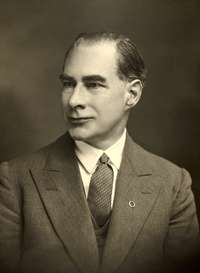
Kevin O’Shiel, an acquaintance of Dalton’s from when they had campaigned together for Sinn Féin in the 1918 South Armagh by-election, described his death as “a tragic mistake, indeed, a crime.” Although not personally familiar with the details of the case, he was told by the IRA director for publicity, Pierce Beaslai – who was – that Dalton had been a member of the Irish Republican Brotherhood (IRB) and it had been other members of this secret society who had killed him.
Dalton’s habit of visiting the Limerick RIC barracks canteen for a drink (“being rather a thirsty soul,” as O’Shiel generously put it) was enough to put him under suspicion. Quite why Dalton would feel the need to go to an enemy stronghold for a drink when there were presumably enough pubs in Limerick already, O’Shiel did not speculate about.
Despite vindication by a top level inquiry, which had included Pierce Beasley, an “undisciplined group” from the IRB took it upon themselves to shoot Dalton all the same. Michael Collins, for one, was enraged, not only that an innocent man was dead, but how a decree of the IRB Supreme Executive, of which Collins was head, had been blatantly ignored.[9]
This breach in discipline was taken seriously enough by the IRA GHQ for Frank Thornton, the Deputy Assistant Director of Intelligence, and ‘Squad’ member Joe Dolan to be dispatched to Limerick for investigation. After a week of careful survey, as Thornton put it, they were able to piece together something of the local scene.
Michael Collins was enraged, that an innocent man was dead, and that a decree of the IRB Supreme Executive, of which Collins was head, had been ignored
Dalton had not only been a member of the 1st battalion of the Mid Limerick IRA, but its intelligence officer, and his killers had been from the 2nd battalion, the 1st and 2nd covering Limerick City and Castleconnell respectively. Thornton noticed the tension between the two battalions dating back to the Easter Rising, although he leaves that possible reason for the shooting unsaid, and says nothing about any role by the IRB.
Instead, he identifies the motive as the result of a misunderstanding: Dalton had indeed been associating with enemy agents like he had been accused of, but they had been his double-agents and he had been meeting them for information, and “some very valuable information” at that according to Thornton, in his capacity as intelligence officer. Thornton and Dolan left Limerick confident that they had definite evidence to submit to GHQ that Dalton had been innocent like the earlier Dáil Éireann inquiry had said.[10]
Outsiders
Both O’Shiel and Thornton were too far removed from the Limerick scene to be ideal sources. O’Shiel’s worth is primarily in what he tells us the reactions in Dublin, and he corroborates Joseph Dalton’s claim that the victim had already been cleared of the charges against him.
As for Thornton and Dolan, their week in the city was unlikely to be enough to fully gauge the situation there, despite what Thornton thought, but Dalton’s membership of the 1st battalion and the feud between the 1st and 2nd battalions are corroborated by more local sources.
The two members of Collins’ Dublin ‘Squad’ sent to investigate were out of their element in Limerick.
Historians have been divided over Thornton’s statement that Dalton had been a luckless intelligence officer shot for doing his job too well. According to Thomas Toomey: “Thornton and Dolan were hard-bitten intelligence men who lived by their wits in the ruthless world of Dublin in 1920 and it would be reasonable to believe that they would have smelled a ‘cock and bull’ story from a distance” – which may have been true in Dublin, but in Limerick they were outsiders in an unfamiliar scene.[11]
John O’Callaghan, on the other hand, characterises the 1st battalion as having been “redundant” since 1917, making Dalton’s activities as its intelligence agent unlikely. Furthermore, if Dalton had secured such information, none of it has since come to light.[12]
Of course, there is no reason to believe that any such intelligence should do so, considering the clandestine nature of espionage, especially if Dalton had declined to keep written notes. Still, it is surely significant that none of the other sympathetic sources repeated this claim.
Manhunt
A more detailed account can be found in the BMH Statements of a man who worked in the Limerick IRA as O/C of its 5th battalion: Richard O’Connell. The murder of a man both the Dáil and the IRB Supreme Executive had already cleared was a challenge to their authority that could not go unanswered, and O’Connell was tasked with tracking down the main suspect. Given the inter-battalion rivalry, it is perhaps not surprising that this was the quartermaster of the 2nd battalion: Martin Barry.
On the run and now wanted by both sides in the war, Barry proved himself an elusive prey until O’Connell was able to arrange a meeting with him in Limerick City, from which he was taken to Castleconnell and placed under arrest. O’Connell does not say how willingly Barry went. The quartermaster need not have worried, as there was no clear evidence against him for Dalton’s murder and the charges fizzled out after a week.[13]
Insiders
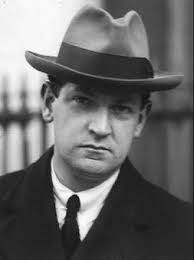
As a neutral observer to the friction between the 1st and 2nd battalions, O’Connell had no problem believing that the feud was as much a factor in Dalton’s murder as his poor choice of houses to visit. Another local source and part-time Volunteer, John J. Quilty, went as far as to accuse the 2nd battalion of maligning Dalton’s character in order to smear the 1st battalion by association. Given the vitriol involved, this is not too hard to believe.[14]
O’Connell’s account also sheds more light on the role of the IRB. He had been enrolled in the Organisation – as insiders liked to call it – by Liam Forde, one of the heads of the local IRB Circle. Forde was also Brigade Commandant of the Mid Limerick IRA, but O’Connell regarded his role in the case as an assignment on behalf of the IRB specifically.
O’Connell’s attitude towards the IRB when he came to composing his BMH Statement decades later was one of faint condensation. He remembered it as having little importance in Limerick and being largely limited to the 1st battalion, himself being an exception. As that battalion had a poor reputation among the others, the IRB was regarded with the same low opinion accordingly.[15]
The Brotherhood
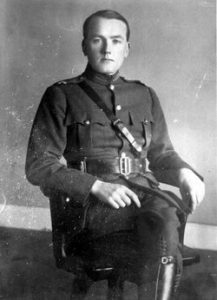
The association in O’Connell’s account of the IRB with the 1st battalion, and the consensus in most of the sources that Dalton was killed by the 2nd battalion, would seem to contradict Kevin O’Shiel’s opinion that Dalton’s shooting was an act by the IRB, this same IRB which supposedly had no real influence outside of one battalion. However, contemporary paperwork within the IRA would seem to argue against such a clear depiction.
Court-martial charge sheets signed on the 27th of May 1920 by IRA Adjutant general– who would then have been Gearóid O’Sullivan – listed a series of alleged offences by six Volunteers, one of whom was Martin Barry.
All six were charged with committing robberies without the sanction of the IRA GHQ and with keeping the money gained from such robberies – it is unclear which one was considered the worst.
Barry’s charge sheet is noteworthy in how it included the accusation that he:
Attempted to coerce an Officer of the Limerick City Batt. into joining another organization, by threatening him that he would not be acceptable for the position of Batt. Commandant, and that he would not be trusted by his officers unless he joined.[16]
Although this other organisation was not named, its description could only match the IRB, which had a policy of infiltrating other societies such as the IRA and encouraging the promotion of its own members to better control the secondary body.[17]
Many believed that the killing of Dalton was due to a dispute within the IRB in Limerick.
That Barry was in the IRB is supported by the recollections of Con McNamara, also of the 2nd Battalion and a lieutenant in its A Company, of Barry acting as witness for McNamara being sworn into the Brotherhood in 1917 by their commanding officer, John Sweeney.[18]
Such evidence indicates that Richard O’Connell’s view of the IRB in the Mid Limerick Brigade as largely limited to the 1st Battalion was an oversimplification. After all, not only were at least three 2nd Battalion officers in the Organisation, but one was accused of threatening an officer of 1st into joining.
Kevin O’Shiel’s belief that Dalton’s murder was a case of the IRB turning on its own now appears a more solid one. That IRB members would defy so blatantly an order from their superiors in the Executive casts the Brotherhood in a different light to its usual image as a slick, well-oiled machine under the firm control of its leadership. Here, it is a body of men as prone to infighting, vendettas and uncertain discipline as any in this period.
In light of what O’Connell had to say, it would be tempting to regard these court-martials as being for Dalton’s murder, particularly as the dates are so close together. But nowhere in the paperwork does it suggest anything of the sort, and it is hard to imagine the murder of a fellow Volunteer being considered of less importance than the misappropriation of funds. O’Connell’s belief that he had arrested Barry on the charge of Dalton’s shooting seems to have been a confusion, perhaps brought about the decades that had passed by the time he composed his BMH Statement in 1952.
The court-martial was to be held on the 5th of June in Limerick, and letters were sent to Rory O’Connor, as IRA Director of Engineering, and Tomás Malone, Commandant of the East Limerick Brigade, to attend in their roles as senior officers. The court-martial notes depict a sullen and uncooperative Martin Barry refusing to answer questions.[19]
The final verdict has been unrecorded. Some clue, however, may be gleaned from how Barry was identified in April 1921 as still being the Brigade quartermaster. Clearly, the court-martial had done his career no harm at all.[20]
A Case without a Conclusion
A visiting reporter from the Irish Times in the days following Dalton’s murder noted how the scene of the crime on Clare Street attracted hundreds of visitors, and the many standpoints from which the circumstances were debated. The discussion continues to this day, with none of the sources able to provide a clear picture.[21]
Joseph Dalton was evasive on the stand in the Crown court inquiry. Frank Thornton described James Dalton as an intelligence officer who fell under suspicion when meeting his own spies, a claim that not even the other sympathetic sources repeat.
There was to be no justice for James Dalton
O’Connell provided some illuminating details, particularly on the feud between the 1st and 2nd Battalions that served as the backdrop to the murder. O’Connell, however, underestimated the extent of the IRB. He believed it limited to the 1st Battalion, while there is ample proof that it was prominent throughout the 2nd as well.
It is the source most removed from the Limerick scene, Kevin O’Shiel, who was probably the most accurate when he described the murder as resulting from conflict within the local IRB, but he could provide little more than that.
Even the original question of whether Dalton was a police spy is disputed. Both the Dáil Éireann and IRB Supreme Executive found there were sufficient grounds to declare him innocent, but this was not enough to stop those who believed otherwise from shooting him dead in the street.
There was to be no justice for James Dalton. His family continued the fight to clear his name, going so far as to write to Arthur Griffith. Dalton’s widow was granted £500 by the Dáil in recognition of the unlawfulness of his homicide. She died in July 1921, a little over a year after her husband. Their eldest daughter, who had been among those who had witnessed their father’s murder, heard the names of those responsible from her father as he had lain dying in the street. She never revealed who they were. According to her son, she never ceased to preach the virtues of forgiveness.[22]
It was the best legacy James Dalton was going to get, as a man who learnt that sometimes in war, it is not only the enemy who is trying to kill you.
Bibliography
Newspapers
Irish Times, 18/05/1920
Limerick Chronicle, 18/05/1920
Limerick Chronicle, 27/05/1920
Limerick Leader, 17/05/1920
Limerick Leader, 28/05/1920
Limerick Leader, 31/05/1920
Bureau of Military History / Witness Statements
O’Connell, Richard, WS 656
O’Shiel, Kevin, WS 1770 – Part 5
Portley, Morgan, WS 1559
Quilty, John J., WS 516
Robinson, Séumas, WS 1721
Thornton, Frank, WS 615
Books
Coogan, Oliver. Politics and War in Meath, 1923-23 (Dublin: Folens and Co. Ltd, 1983)
O’Callaghan, John. Revolutionary Limerick: The Republican Campaign for Independence in Limerick, 1913-1921 (Dublin: Irish Academic Press, 2010)
O’Halpin, Eunan, ‘Problematic Killing during the Irish War of Independence and its Aftermath: Civilian Spies and Informers’, Death and Dying in Ireland, Britain, and Europe: Historical Perspectives (Sallins, Co Kildare: Irish Academic Press, 2013)
Toomey, Thomas. The War of Independence in Limerick, 1912-1919 (Thomas Toomey, 2010)
National Library of Ireland Manuscripts
MS 11,406/2/3-5
MS 11,410/6/2-7
Military Service Pensions Collection
MA/MSPC/RO/134
Notes
[1] Limerick Chronicle, 18/05/1920, 27/05/1920
[2] Limerick Chronicle, 27/05/1920 ; O’Shiel, Kevin (BMH / WS 1770 – Part 5), p. 147
[3] Limerick Chronicle, 27/05/1920
[4] Limerick Leader, 17/05/1920
[5] Limerick Chronicle, 27/05/1920 ; Limerick Leader, 28/05/1920
[6] Limerick Leader, 31/05/1920. Compare the muted reaction of the jury with the coroner’s inquest into the murder of Tomás Mac Curtain which accused Llyod George, among others, of having a role.
[7] Coogan, Oliver. Politics and War in Meath, 1923-23 (Dublin: Folens and Co. Ltd, 1983), p.168
[8] O’Halpin, Eunan, ‘Problematic Killing during the Irish War of Independence and its Aftermath: Civilian Spies and Informers’, Death and Dying in Ireland, Britain, and Europe: Historical Perspectives (Sallins, Co Kildare: Irish Academic Press, 2013) p. 343
[9] O’Shiel, p. 148
[10] Thornton, Frank (BMH / WS 615), p. 16-7
[11] Toomey, Thomas. The War of Independence in Limerick, 1912-1919 (Thomas Toomey, 2010), pp. 284-5
[12] O’Callaghan, John. Revolutionary Limerick: The Republican Campaign for Independence in Limerick, 1913-1921 (Dublin: Irish Academic Press, 2010), p. 176
[13] O’Connell, Richard (BMH / WS 656) pp. 37-8
[14] Quilty, John J. (BMH / WS 516), p. 19
[15] O’Connell, Richard (BMH / WS 656) pp. 37-8
[16] National Library of Ireland Manuscripts, MS 11,410/6/2
[17] One example of this was the eyewitness testimony of a distinctly unimpressed Séumas Robinson (BMH / WS 1721), p. 18
[18] Military Service Pensions Collection, MA/MSPC/RO/134, p. 11
[19] National Library of Ireland Manuscripts, MS 11,410/6/2-7 and MS 11,406/2/3-5 for the complete paperwork that has survived on the court-martial.
[20] Portley, Morgan (BMH / WS 1559) p. 29
[21] Irish Times, 18/05/1920
[22] O’Callaghan, p. 175 ; Toomey, p. 284